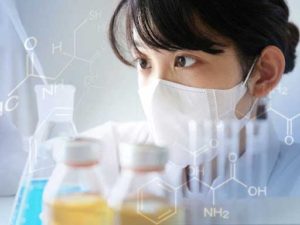Pharmaceutical Development
Pharmaceutical development aims to create a high-quality product and manufacturing process that consistently delivers the product’s expected performance. The facts and expertise acquired through pharmaceutical development studies and manufacturing experience enable the creation of design space, specifications, and production controls with scientific justification.
Pharmaceutical development data may serve as a foundation for quality risk management. It is critical to understand that goods cannot be evaluated for quality; rather, quality should be designed into them. Changes in formulation and manufacturing processes throughout development and lifecycle management should be seen as opportunities to expand our knowledge and contribute to the design space’s formation. Similarly, using pertinent information obtained from trials that produce unexpected outcomes may be beneficial. The applicant proposes design space, which is then subject to regulatory review and approval. Working within the confines of the design area is not seen as a shift. Exiting the design area is considered a change and will often trigger the regulatory post-approval change procedure.
Pharmaceutical Development should include information demonstrating that the dosage form is chosen and the formulations suggested are appropriate for the intended application. This should include adequate information in each area to allow for a knowledge of the drug product’s development and manufacturing process. Where summary tables and graphs provide clarity and enable review, they are recommended.
At the very least, essential features of drug ingredients, excipients, container closing systems, and manufacturing processes should be identified and control methods justified. Critical formulation characteristics and process parameters are often determined by determining how their change may affect the product’s quality.
Additionally, the applicant may undertake pharmaceutical development studies, resulting in a greater understanding of product performance across a wider variety of material characteristics, processing choices, and process parameters. Incorporating this extra information into Pharmaceutical Development demonstrates a greater knowledge of material characteristics, production processes and associated controls. This scientific knowledge enables the creation of a larger design space. In these instances, possibilities exist to create more adaptable regulatory methods, such as those which enable the following:
- Risk-based regulatory decisions (reviews and inspections)
- Manufacturing process improvements within the approved design space
- The dossier without further regulatory review
- A decrease in the number of post-approval submissions
- Continuous quality control resulting in a decrease in end-product release testing
To achieve this level of flexibility, the applicant must show an increased understanding of product performance across a variety of material characteristics, manufacturing processes and process factors. This comprehension may be achieved via formal experimental designs, process analytical technology (PAT) and previous knowledge. Appropriate use of quality risk management concepts may aid in prioritizing future pharmaceutical development studies to accumulate this information.
Pharmaceutical development studies should be designed and conducted in a manner compatible with their stated scientific objective. It should be understood that the degree of knowledge acquired, not the number of data, serves as the foundation for science-based submissions and regulatory assessment.
Components Of The Drug Product
- Drug Substance – The physicochemical and biological characteristics of the drug substance that may affect the performance. Manufacturability of the drug product or that which is purposefully included in the drug substance should be identified and addressed.
- Excipients – The excipients selected, their concentration, and the features that may affect the medicinal performance or manufacturability in relation to their respective functions.
Drug Product
- Formulation Development – A description should be given detailing the formulation’s development, including identifying those characteristics essential to the drug product’s quality, taking intended use and mode of administration into account. Formal experimental designs may aid in finding essential or interacting factors that may be necessary to guarantee the product’s quality.
- Overages – In general, it is discouraged to use an excess of a pharmacological ingredient to compensate for deterioration during manufacturing or the product’s shelf life or to prolong it. Any overages in manufacturing the drug product, whether or not they are visible in the final formed product, should be justified in light of safety and effectiveness.
- Physicochemical and Biological Properties – The physicochemical and biological characteristics of the drug product that are important to its safety, performance, or manufacturability should be identified and addressed. This covers the physiological consequences of the active ingredient and formulation characteristics.
Manufacturing Process Development
It is essential to evaluate the key formulation characteristics in conjunction with the available manufacturing process choices to address process selection and ensure component suitability. It is necessary to consider the equipment’s suitability for the planned goods. Process development studies should be the foundation for process improvement, validation, continuous process verification (where appropriate), and any required process control.
Container Closure System
Primary packing materials should be justified. The discussion should include research conducted to establish the container and closure’s integrity. Consider the possibility of an interaction between the product and the container or label.
Microbiological Attributes
Where applicable, the medicinal product’s microbiological characteristics should be mentioned. The discussion should include the following points:
- The reason for conducting microbiological limits testing on non-sterile drug items or not;
- The selection and efficacy of preservative systems in goods containing antimicrobial preservatives or the antimicrobial efficacy of naturally antimicrobial items.
While chemical testing for preservative content is often included in the specification for pharmaceutical products, antimicrobials should possess proven preservative efficacy throughout development.
Compatibility
Compatibility should be considered for the medication product with reconstitution diluents to give adequate and supporting labeling information. This information should include the recommended in-use shelf life, storage temperature, and probable concentration extremes.
For more information on Pharmaceutical Development, visit rondaxe.com today.

